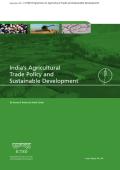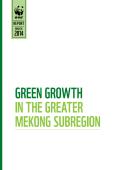


Mekong countries remain relatively well-endowed in natural capital, but signs of pressure and stress on the region’s natural capital are becoming more apparent alongside rapid rates of growth and market development. Escalating land, resource and infrastructure demands arising from urbanization and industrialization combined with a rapidly growing human population means that biodiversity and ecosystem services in the Mekong countries currently face unprecedented threats. At the same time, climate change is affecting ecological productivity and economic vulnerabilities in ways that may encourage even greater pressures on the natural system and cause progressively greater stresses to human and economic systems.
In this paper, the authors explore the many successful strategies and measures for climate resilience and low carbon development that communities and leaders have pursued at the subnational level. They draw on the rich and practical experiences of CDKN’s project partners and the broader ICLEI network.
They argue that the battle for climate compatible development will be won or lost in provinces, districts and cities. There are distinct challenges at subnational level– for example, future climate data for local and subnational levels is more uncertain than at larger scales, and subnational decision-makers face intense local pressure to act on the negative impacts of climate extremes and disasters. There are also unique opportunities. Subnational decision-makers often have a sound understanding of climate trends in their area, based on first-hand experience and local and indigenous knowledge. They have a good sense of solutions that are effective in the local context and they have the ability to mobilise local resources for implementation, including people’s time and knowledge.
Climate-related disasters have inflicted increasingly high losses on developing countries, and with climate change, these losses are likely to worsen. Improving country resilience against climate risks is therefore vital for achieving poverty reduction and economic development goals.
This report discusses the current state of knowledge on how to build climate resilience in developing countries. It argues that climate-resilient development requires moving beyond the climate-proofing of existing development pathways, to consider economic development objectives and resilience priorities in parallel. Achieving this will require political vision and a clear understanding of the relation between climate and development, as well as an adapted institutional set-up, financing arrangements, and progress monitoring and evaluation. The report also discusses two priorities for climate-resilient development: disaster risk management and the involvement of the private sector.
